2020 Houses Awards shortlist reveals new state of domestic bliss
A showcase of the best architect-designed homes in the country, this year's awards highlight an unusual but welcome change.
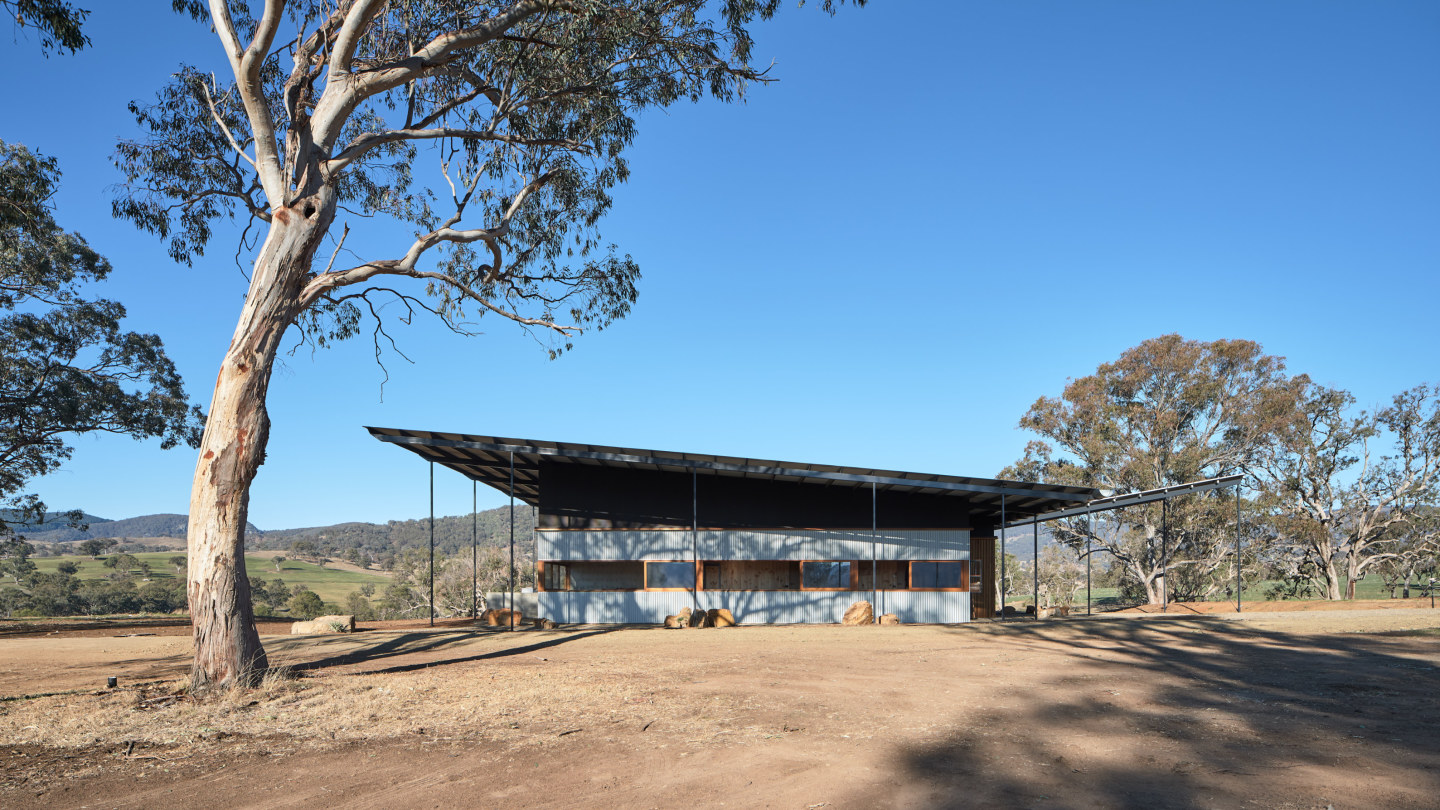
The Upside Down Akubra House designed by architect Alexander Symes sits lonely sentinel in outback NSW. Barton Taylor
When the annual Houses Awards shortlist was released last week, I spotted lots of fancy fortifications – screens, scrims and other architectural devices for shutting out the world. Cloister-like courtyards appear great places to wait out quarantine; a lonesome bungalow on an isolated landscape reads as a perfect retreat, far from the madding (and maybe contagious) crowd.
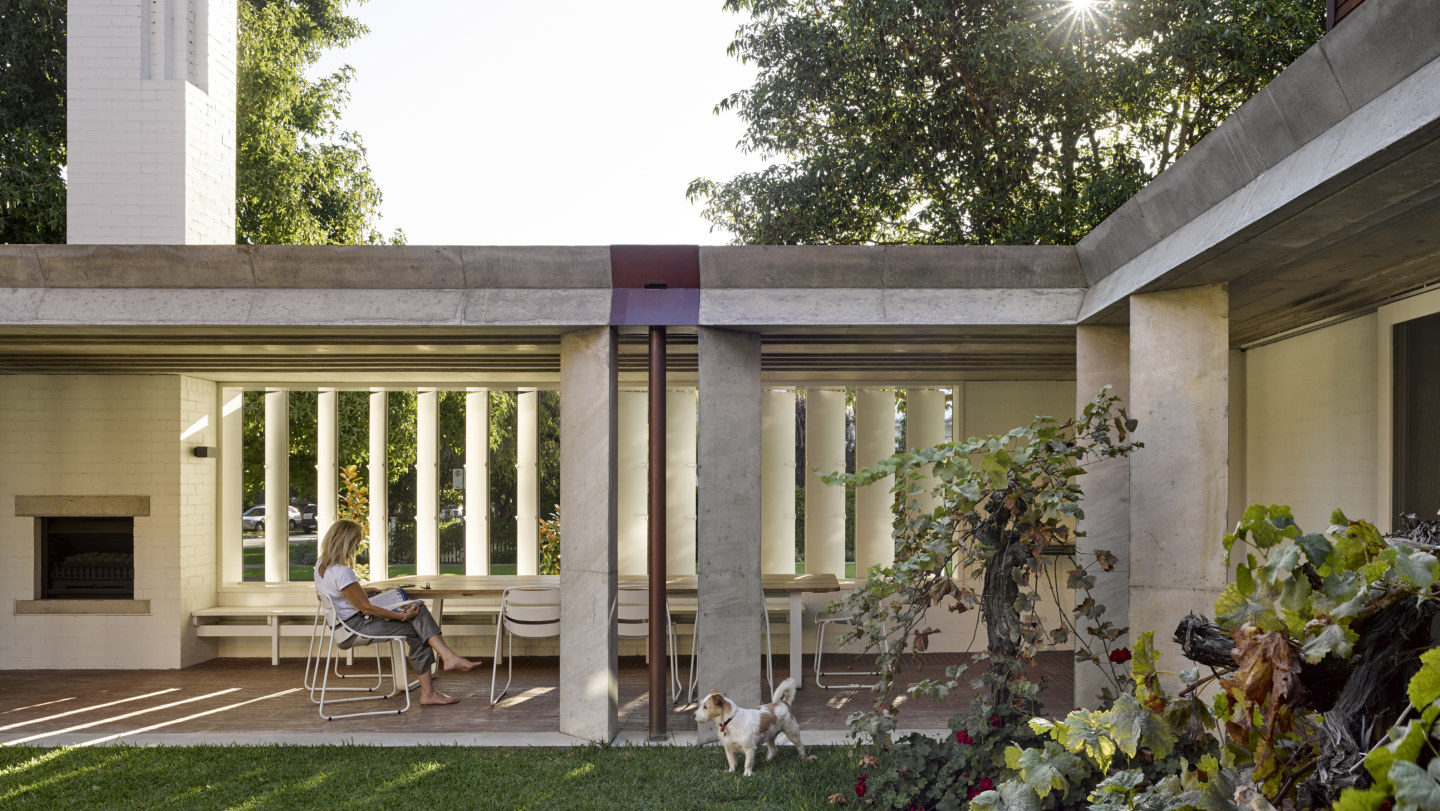
In Subiaco, Perth, this Vokes and Peters-designed home offers a private courtyard-style backyard, perfect for our quarantined times. Christopher Frederick Jones
But then I realised I might be suffering from “coronavision”, that tendency to see everything through today’s epidemiological lens.
A house, after all, can take years to complete. From first concepts to habitable dwelling involves a nuanced choreography of able minds and deft hands. So what the Houses jury was deliberating on earlier this month had been devised, of course, in pre-viral times. Remember those?
And where I saw defensiveness, Katelin Butler, chair of the Houses Awards for the better part of their decade-long existence, sees “playful, joyous, socially conscious” homes.
“A distinct kind of Australian residential architecture has evolved,” she says. “There’s a generosity to the houses these architects design, an engagement with the community and a gesture towards the street.”
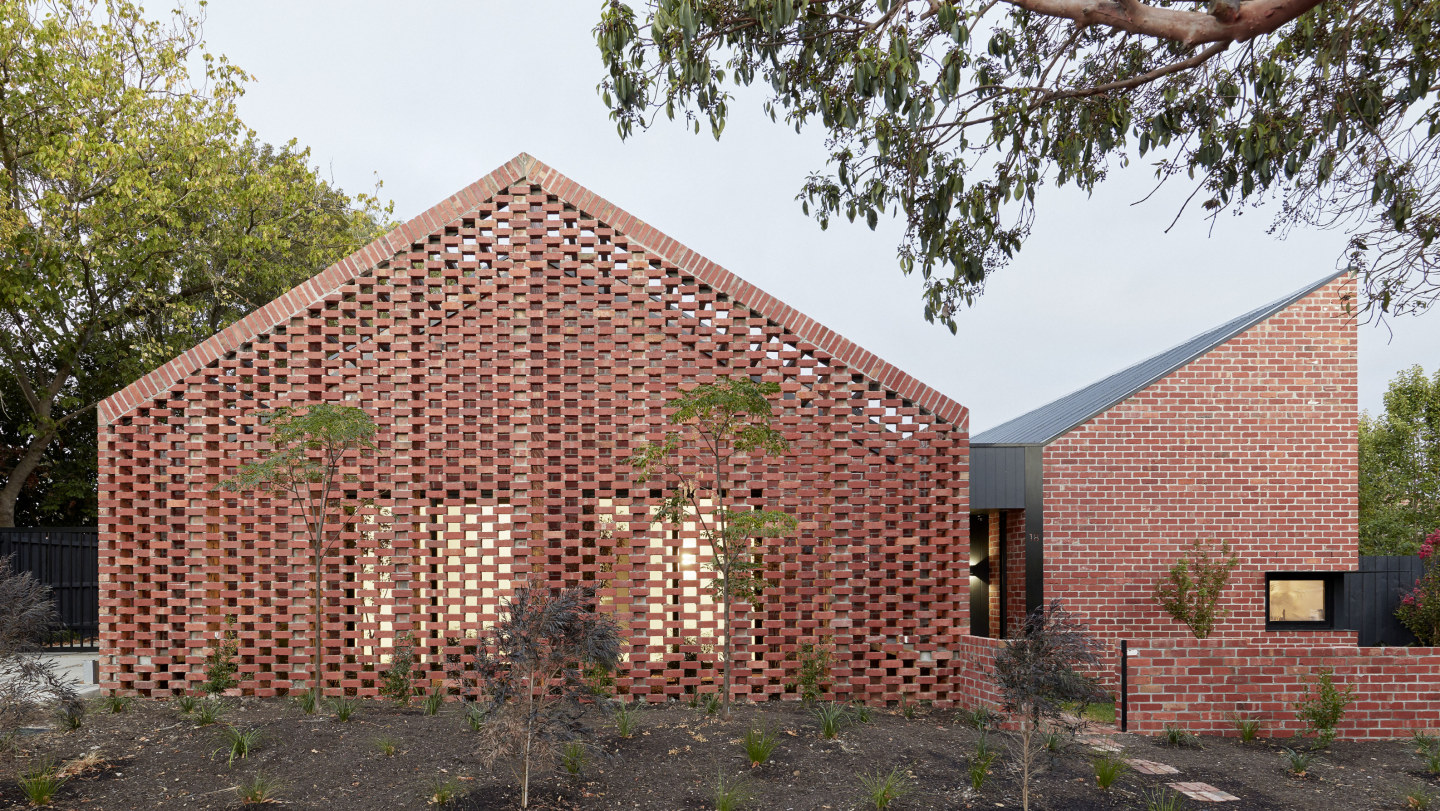
A carapace of stacked bricks act as screens for this Bardolph Gardens house by Breathe Architects in the Melbourne suburb of Glen Iris. Tom Ross
So, while a carapace of stacked bricks reiterating the A-frame façade of Breathe Architecture’s Bardolph Gardens house in Melbourne’s Glen Iris could be read as a rampart, it can also be understood as a means of filtering the outside in. (An inset concrete bench does indeed offer a pleasant street vista through the gaps between the bricks, which can be understood from this angle to echo the mashrabiya latticework of traditional Arabic architecture.)
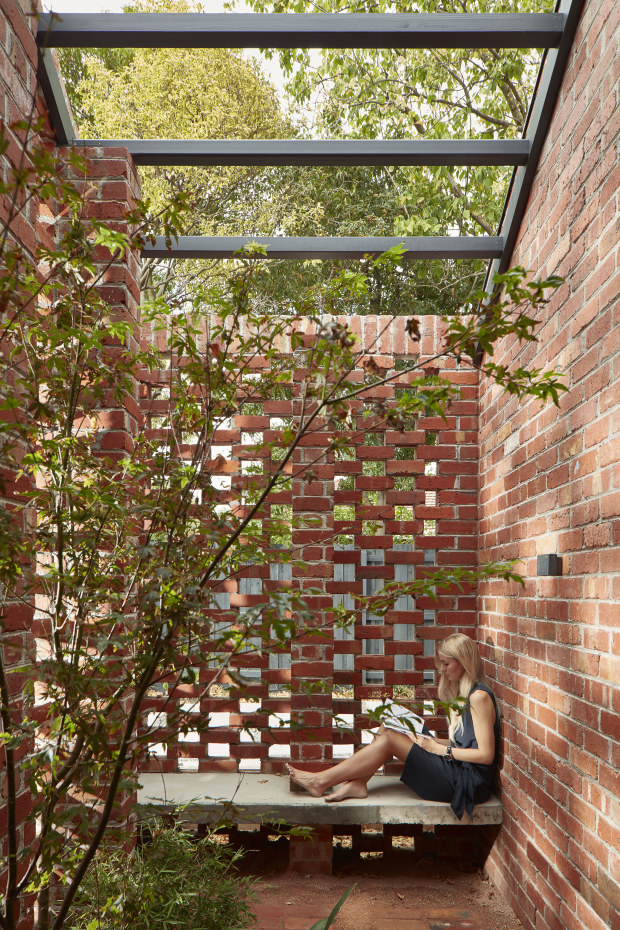
Seen from inside, the brickwork appears to riff off the traditional Arab mashrabiya fretwork screen. Tom Ross
The lush garden room of Stuart Vokes and Aaron Peters’ Subiaco, Perth, house expresses all the tranquillity of a private sanatorium, but can also be read, reckons Butler, “as a neighbourhood pocket park, yet still private”.
A low-lying heritage-style terrace in North Fitzroy, Melbourne, has been obscured behind a grille of painted timber batons by architect Rob Kennon. That might seem defensive, but yes, it could also appear playful as the scrims swing open to reveal original window placements and a long corridor which leads to a lushly landscaped yard.
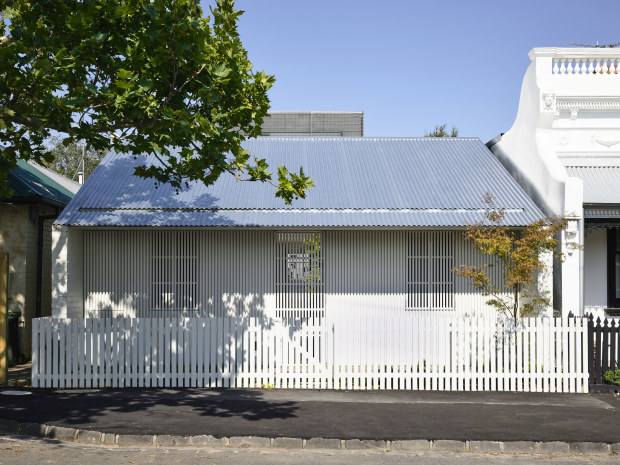
This heritage workers' cottage in North Fitzroy, Melbourne, has been concealed by a screen of timber batons, by architect Rob Kennon. Playful panels pivot open to reveal the inside. Derek Swalwell
While Butler insists this new Australian architecture is “very honest, authentic, a clear expression of materials and texture”, she does concede that this year’s Houses Awards jury – judging our dwellings in a time of global health crisis – was not immune to the preoccupations du jour.
“We were thinking about climate change, [the] current pandemic and economic downturn and how these will affect the architecture that is created,” she says, noting that the five-person jury examined the entries amid bigger questions such as whether architecture itself would change as a result of these factors. The best architectural juries, after all, are barometers of the Zeitgeist.
Ten years ago we had a relatively singular architectural culture. Now I’d say it’s characterised by integrity, complexity and plurality.
— Hannah Tribe
The Pritker Prize, for instance – global architecture’s highest accolade – was for decades awarded to middle-aged white men in big cities, expert in a certain domineering type of modernism. But since 2010, when the prize went to the female-male tandem of SANAA (who are designing the new wing of the Art Gallery of NSW), the prestigious award has celebrated the talent of architects on the periphery, in India, say, or Chile. The 2020 Pritzker, announced in March, went to Yvonne Farrell and Shelley McNamara, of Dublin practice Grafton Architects.
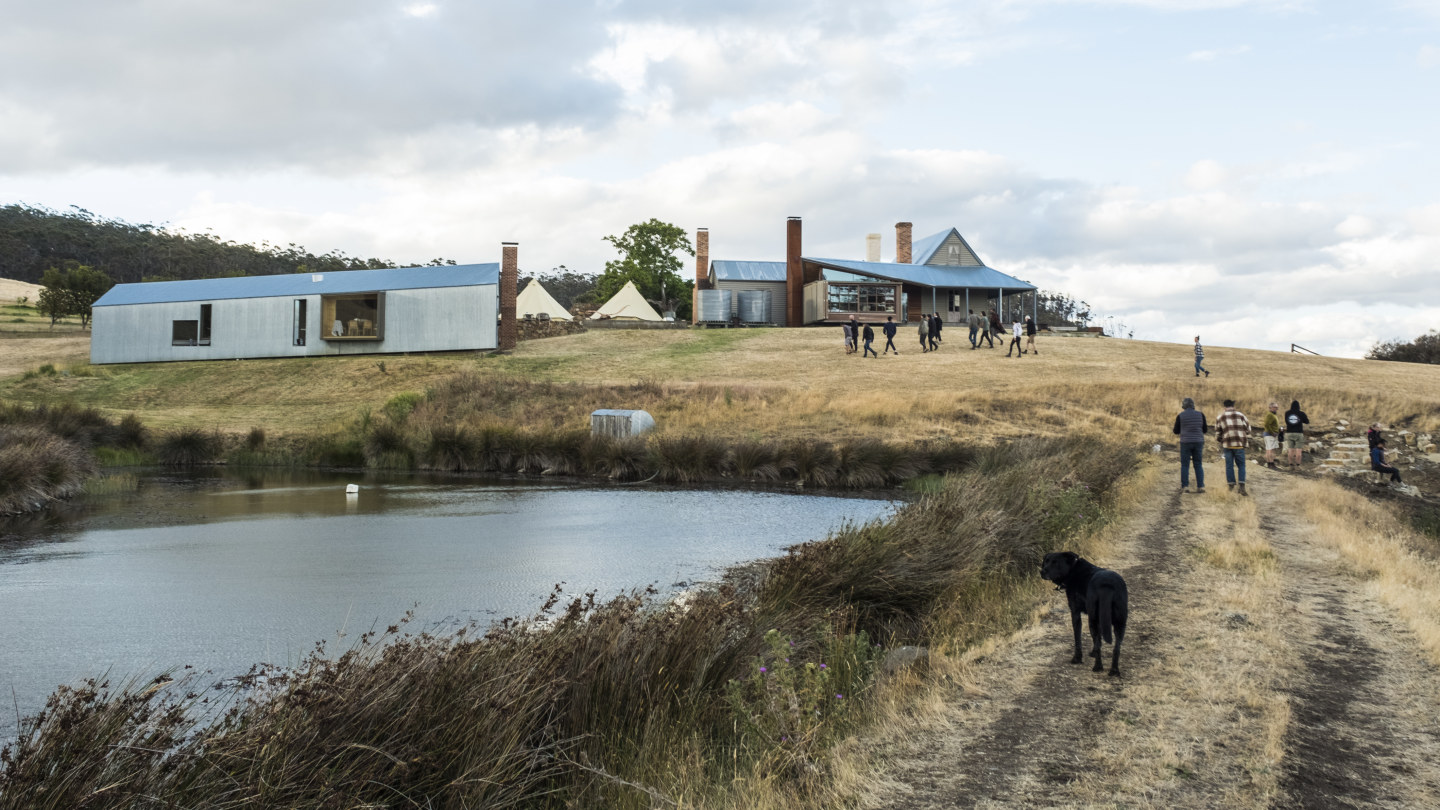
John Wardle's Shearer's Quarters on Bruny Island, Tasmania. Chris Crerar
When the Houses Awards were launched in 2011, Sydney architect Virginia Kerridge won for her grand interpretation of a rural homestead in country NSW. The following year, Melbourne architect John Wardle scooped House of the Year for his neo-rustic Shearer’s Quarters on Bruny Island, off the south coast of Tasmania. These said a lot about the house as outback refuge in the Australian psyche.
In 2016 the House of the Year award went for the first time to an apartment, designed by Chenchow Little in the posh Sydney suburb of Darling Point. “It was a moment when everyone was starting to become very conscious of the need to increase density in our cities,” says Butler.
Last year’s winner, the Daylesford Longhouse in Victoria, designed by Brisbane practice Partners Hill, is an airy, 110-metre linear shed that incorporates a boutique farm and kitchen garden, cooking school and reception venue, as well as a home. A fantasy of a men’s shed on steroids, wearing an apron.
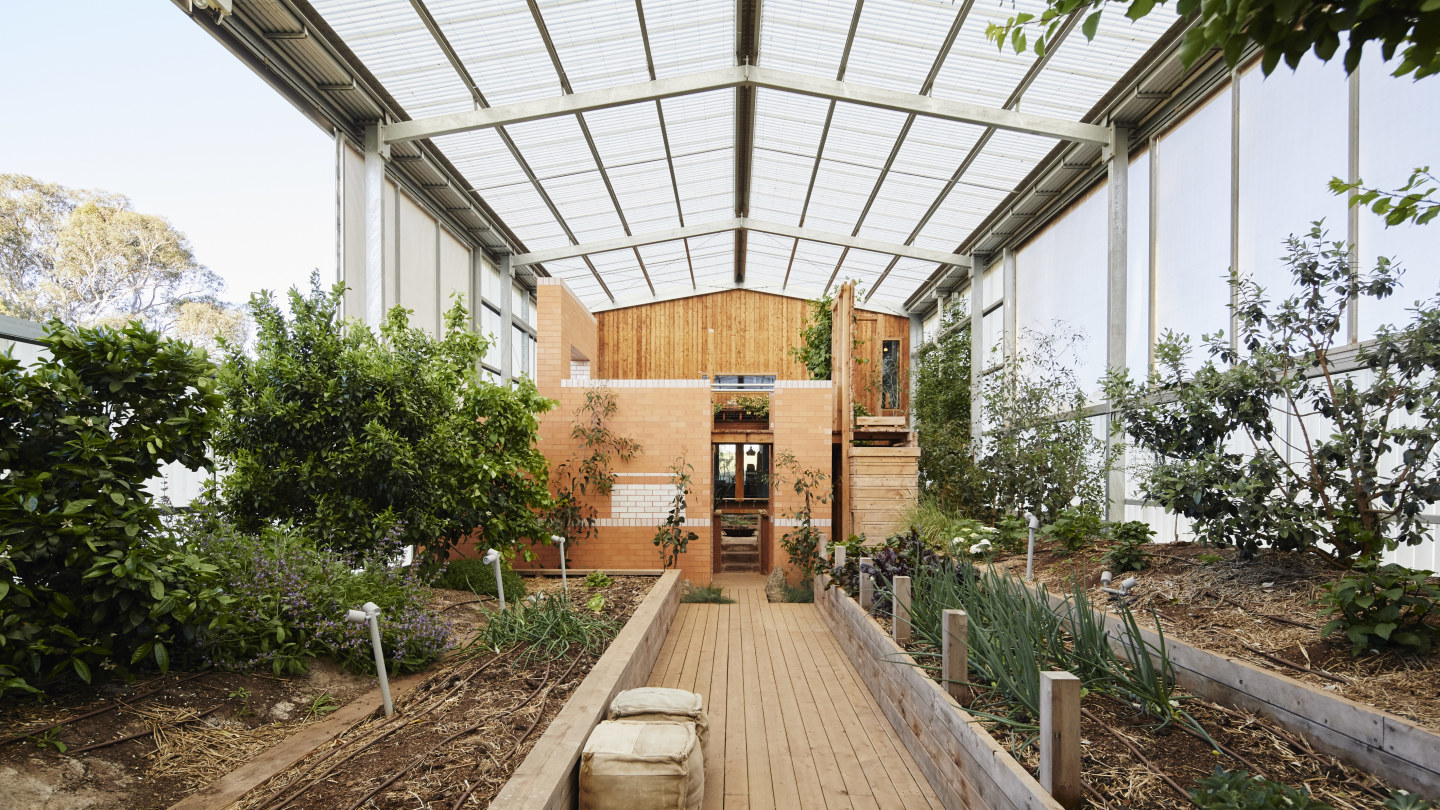
The Daylesford Longhouse, which won last year's Houses Award, is like "a fantasy men's shed on steroids", writes design editor Stephen Todd.
“Ten years ago we had a relatively singular architectural culture, particularly in the residential sector,” says Hannah Tribe, principal of Sydney's Tribe Studio Architects. “Now I’d say it’s characterised by integrity, complexity and most importantly, plurality.”
Tribe, who was on this year’s Houses Awards jury, attributes that change to broader shifts in Australian domesticity. “Men are now sharing the work of the house – cooking, washing, cleaning, raising children – so I think the gendered spaces of houses are evaporating.
“We’re not just seeing loads of excellent women architects, we’re seeing briefs from working mums, stay-at-home dads, families with a 50-50 split, different family shapes and sizes, and we’re seeing male architects with home lives where they are engaged with domesticity in a way our dads were not.”
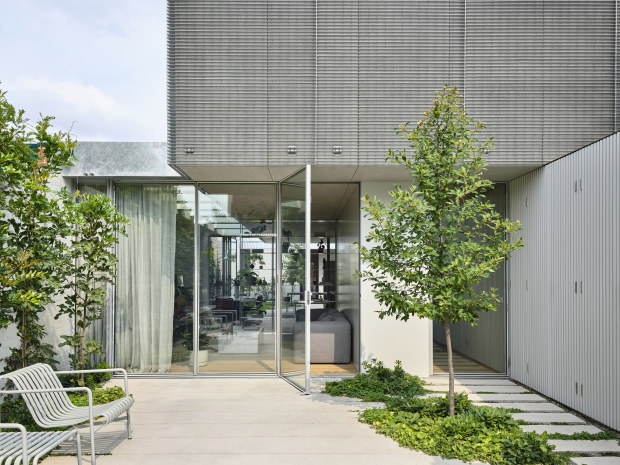
In North Fitzroy, the concrete jungle meets nature in this Rob Kennon-designed home. Derek Swalwell
It might well be that in this sophisticated nuance, a new era of Australian architecture resides.
Either way, it’s time, says Butler, to “move beyond beautiful spaces and think about what it’s like to live in these houses.”
Need to know
The winners of the 2020 Houses Awards in categories including Best House under and over 200m², House Alteration, Apartment or Unit, and House of the Year, will be announced on July 31, 2020.
housesawards.com.au
Subscribe to gift this article
Gift 5 articles to anyone you choose each month when you subscribe.
Subscribe nowAlready a subscriber?
Introducing your Newsfeed
Follow the topics, people and companies that matter to you.
Find out moreRead More

Latest In Design
Fetching latest articles